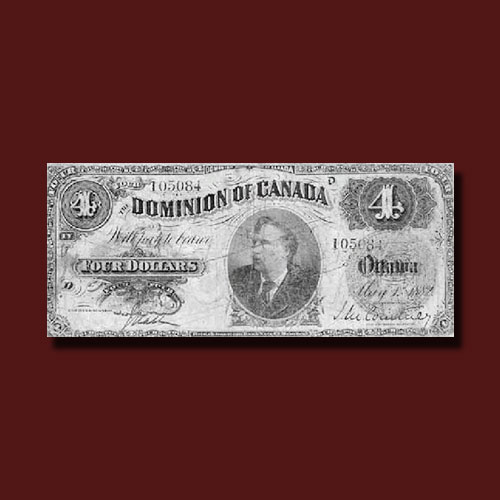History of the First Canadian Banknotes
2019-03-15 Fri
Canada issued its first official unified Canadian banknotes in 1935. Different types of notes were issued before as well as after Confederation in 1867, but different banks issued their own currency which could be exchanged for coins even after confederation. Some banks issued notes of denomination pounds sterling due to the country's links with British Empire while others issued dollar-bills as Canada maintained good trade relations with the US.Individual banks and the Province of Canada (Ontario and Quebec) issued “Dominion of Canada” notes after confederation, and circulated them in other provinces. Many private banks collapsed starting 1900s, due to which there was a need for new regulatory policies. The Bank of Canada Act was approved in 1934 and a central bank policy was set up.
10 banks continued issuing their own notes and all of them opposed the idea of a central bank as they thought they would have to incur heavy losses. On 11th March 1935, the first unified national notes were issued. They weren’t bilingual and were issued separately in French or in English. Dominion of Canada notes were slowly withdrawn and chartered banks were asked to issue limited notes. In 1944, chartered banks were not allowed to print their own notes. $5 notes issued by Bank of Montreal in 1942 and $5 notes issued by Royal Bank of Canada in 1943 were the last two notes to be printed separately by banks.
$1 and $2 notes have been replaced by coins in Canada today and $100 is the largest denomination note. Canadian notes were issued in different colours over the years. For example, the $1 banknote issued in 1935 were green in colour, $2 banknotes were blue, $5 banknotes were orange, $10 notes were dark purple, $20 notes were rose coloured, $50 notes were reddish-brown, $100 notes were dark brown, $500 notes were sepia and $1000 banknotes were olive.
Image Courtesy: Google Images
Latest News
-
Gold Pagoda of Vijaynagar Empire King Deva Raya I
2024-04-10 WedKing Deva Raya I of the Vijayanagara Empire was a patron of Kannada literature and architecture. He ...
-
Silver Denarius of Septimus Severus
2024-04-05 FriLucius Septimius Severus served as the Roman emperor from 193 to 211 AD. Severus sat on the throne o...
-
Extremely rare 'Malaharamari' type Gold Gadyana of King Guhalladeva-III Sold for INR 611000
2024-04-03 WedTribhuvanamalla, also known as Guhalladeva III, was the ruler of the Kadamba dynasty. His reign coin...
-
90 Years of RBI
2024-04-02 TueOn 1st April, PM #Modi unveiled a special commemorative coin marking 90 Years since the foundation o...
-
Silver Denarius of Julia Mamaea
2024-04-02 TueJulia Avita Mamaea, a Christian Syrian noblewoman, was the mother of Roman Emperor Alexander Severus...

